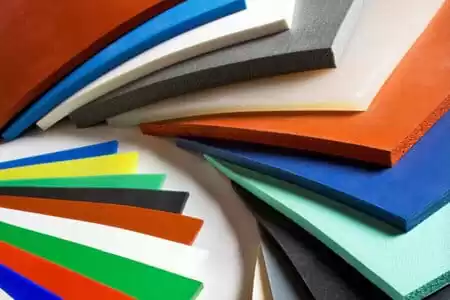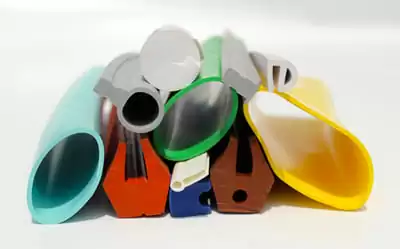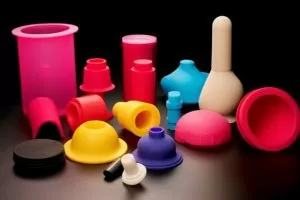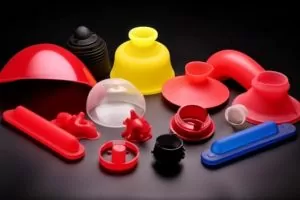1. What is silicone rubber and what are its properties?
Silicone rubber is a modern synthetic polymer chains consisting of silicon and oxygen atoms.
The most attractive properties of silicone rubber are its versatility and broad resistance to temperature extremes, water, UV radiation, ozone, chemicals, and aging elements.
In addition, it is characterized by being light relative to many other rubbers and materials.
What makes silicone rubber so useful is that it can be engineered for specific mechanical conditions, such as strength and elasticity or hardness and softness.
Due to their wide range of physical properties, silicone rubbers are used in a wide variety of products, from the simplest everyday objects to complex aerospace components and medical technology devices.

2. The difference between silica gel and silicone rubber
1) Different properties
Silicone rubber: It is a rubber whose main chain is composed of silicon and oxygen atoms alternately, and there are usually two organic groups attached to the silicon atom.
Silica gel: It is a highly active adsorption material, which is an amorphous substance.
2) Different characteristics
Silicone rubber: Silicone rubber has good low-temperature resistance, and generally can still work at -55°C;
Silicone rubber has good air permeability, and its oxygen transmission rate is the highest among synthetic rubber polymers.
Silica gel: Silica gel has strong adsorption capacity, anti-oxidation ability, and higher stability. For example, it can work in harsh environments with temperatures ranging from -110°C to 350°C.
It is non-toxic, tasteless, antistatic, and fire-resistant, Excellent properties such as high conductivity and ultra-transparency.

3) Different ingredients
Silicone rubber: mainly composed of silicone chains containing methyl groups and a small number of vinyl groups.
The introduction of phenyl can improve the high and low-temperature resistance of silicone rubber, and the introduction of trifluoropropyl and cyano can improve the temperature and oil resistance of silicone rubber.
Silica gel: The main component of silica gel is silicon dioxide.
4) Different uses
Silica gel: Various silica gels have been widely used in drug purification, DNA separation, food drying, high-precision electronics, advanced cosmetics, sewage purification, beer purification, advanced coatings, and resin production or preservation.
Silicone rubber: used for bonding, sealing, insulation, potting in electronics, instrumentation, chemical industry, light industry, machinery industry; surface maintenance of equipment management. It has excellent electrical insulation and arc resistance, moisture-proof and shock-proof.
.jpg.webp)
3. Advantages and disadvantages of silicone rubber
Silicone natural rubber has various advantages and disadvantages that must be considered before use.
Advantages include heat resistance, low production costs, chemical inertness, and oxidation excellent resistance.
Its temperature resistance makes silicone rubber a useful material for electronics that can generate heat, such as motors and power supplies.
While silicone rubber is highly elastic, it does not have the same strength or durability as many other types of materials.
It also tends to be more expensive than other all the elastomers due to its special properties and complex manufacturing process.
Additionally, under extreme conditions, silicone rubber may undergo oxidative degradation over time.
Therefore, when considering silicone rubber as an option for an application, its advantages and disadvantages must first be weighed to make an informed decision about its suitability for the job.

4. The advantages and disadvantages of silica gel
The advantages of using silicones in medical and other applications are enormous. It is highly resistant to temperature, UV radiation, and chemical attack, making it ideal for products that require durability and longevity in harsh environments.
Additionally, silicone sealant is hypoallergenic and non-toxic, making it safe for use on sensitive materials. However, silicone has its drawbacks; it’s often more expensive than traditional materials like rubber or vinyl, and it can be difficult to process due to its unique properties.
Also, some types of silicone can shrink significantly when cooled, which can weaken the connection or make the product not perform as expected. Despite these drawbacks, silicone remains a popular choice due to its wide range of benefits and safety features.

Conclusion
Both silicone rubber and silicone are excellent materials for a variety of applications. However, it is important to understand the differences between them to choose the suitable material for your needs.
Silicone rubber is more durable and can withstand higher temperatures, making it ideal for industrial applications. Silicone rubber, on the other hand, is softer and has better electrical properties, making it perfect for consumer electronics and medical devices.



